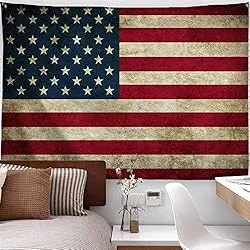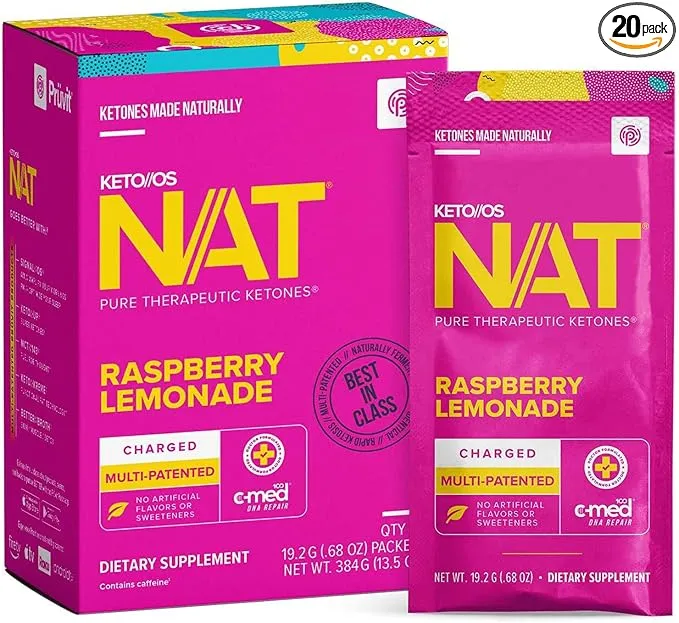5 Best Robot Vacuums for Allergies (with HEPA Filters)
If you suffer from allergies, keeping on top of the cleaning is essential to minimise the dust and pollen in the air, but even the simple task of vacuuming can cause agitation.
That’s where a robot vacuum can be extremely helpful. Not only will they vacuum as regularly as you feel necessary, but you can schedule the cleaning for when you’re away from home so that any small particles in the air have settled before you get back.
In this guide, I’ll run through some of the best robot vacuum cleaners for allergies and asthma that are currently available in the UK, paying key attention to those that have HEPA filters built-in.
Table Of Contents
Robot Vacuum Features for Allergy Sufferers
Here are some key features to look out for in a robot vacuum cleaner if you have asthma or allergies:
-
HEPA Filter – A key feature that those with allergies will look out for is a high-efficiency particulate air (HEPA) filter. Any vacuum will aggravate smaller particles such as dust or pollen that can be released, a HEPA filter will catch 99.95% of particles that are larger than 0.3 microns and according to WebMD, will result in fewer microscopic dust mites being circulated. However, it’s not just the filter that’s key, the vacuum must be well built and sealed to make it effective.
-
Built-in Mop – Included in my recommendations are some 2-in-1 robot vacuums that can also mop your hard floors. This is ideal for allergy sufferers as the tiny particles are captured in the mop, rather than being dispersed. You will usually need to choose which areas to mop from the companion app.
-
Dust Bin Capacity – This is an important feature as it determines how frequently you will need to empty your robot vacuum. If you suffer from dust allergies, then you’ll want to minimise how frequently you empty its onboard bin. Look out for the Roomba i7+ below which has a self-emptying base to significantly reduce the frequency of emptying.
Good to Know: True HEPA vs HEPA-Style
There are strict rules for what can be declared a HEPA filter, in Europe, this is defined by the EU Standard EN 1822-1:2009 and means capturing 99.95% of particles larger than 3 microns.
Look out for ‘HEPA-style’ claims which some manufacturers might use to mislead consumers to the effectiveness of particle capture. Even with a proper HEPA filter, the seal of the robot around the filter can also impact performance.
All of the vacuums shared below have fully compliant HEPA filters.
Best Robot Vacuums for Allergies
Here are my recommended robot vacuum cleaners for allergy sufferers with HEPA filters
- Best Overall: ECOVACS Deebot T8 AIVI
- Runner Up: Roborock S6 Pure
- Best with Self-Emptying Base: Roomba i7+
- Best Mid-Tier: Roomba 960
- Budget Pick: Coredy R750
Below are my detailed reviews of each device, with the pros and cons outlined in full to help with your decision.
Best Overall: ECOVACS Deebot T8 AIVI

Outstanding coverage of your home thanks to hybrid laser and visual camera mapping
Precise control of the mop and water levels
3 hour battery life
Room-by-room cleaning and scheduling
Wide design struggles with smaller spaces
The T8 AIVI is perhaps the most intelligent robot vacuum currently on the market in the UK. It combines laser mapping and visual mapping to create an accurate and detailed floor plan of your home that can be customised in the app.
It has a HEPA filter that will trap dust, dander, and pollen from the air as it vacuums, but this doesn’t always stop the smallest, lightest particles that will be disturbed by any vacuuming. That’s where the built-in oscillating mop comes in to play for your hardwood or vinyl flooring, this is preferred for allergy sufferers as according to WebMD, it will trap the smallest of particles rather than knocking them into the air.
You can set mop no-go zones or vacuum no-go zones, or for remaining areas, both the vacuum and mop can work in tandem.
At 1,500pA, its suction isn’t the most powerful on the market, however, combined with the 5200 mAh, it achieves a huge 200 minutes battery life. On top of this, it has recharge-and-resume technology so it can continue a cleaning cycle after topping up on battery making it ideal for large homes.
Runner Up: Roborock S6 Pure
Lidar mapping is very accurate
Washable HEPA filter
Set no-vacuum and no-mop areas in the app
Instruct robot to clean rooms with your voice via Google Home
Less suction power than the more expensive S6 MAX V
Does not come with spare filters
The S6 is Roborocks latest flagship line of robot vacuums. The S6 Pure is the cheaper of the three, providing the best features-to-price ratio.
The S6 Pure uses lidar navigation which uses lasers to map your home and show a floor plan in the app. You can then set cleaning schedules for each room or create no-go zones.
For anyone with allergies, not only does it have an E-11 washable HEPA filter to ensure no dust or dirt is released into the air, but it also doubles up as a mop. If you have hard floors, the academy for allergies and asthma recommends that you mop them at least once a week.
The S6 Pure can switch between vacuuming and mopping by itself, without the need for any intervention. However, you will need to ensure you’ve set up virtual boundaries in the app else it might try mopping your carpets which won’t end well.
Whilst the water tank and mopping cloth are included with the vacuum, there are no spare HEPA filters so you may want to stock up on these.
For more 2-in-1 devices, see my full guide on robot vacuum and mop combos.
Best with Self-Emptying Base: Roomba i7+
Self emptying base reduces frequency of maintenance
Roomba’s newer AeroForce filtration system with HEPA
Patented dual-rollers provide a thorough deep clean
Best-in-class integration with Alexa and Google Home
Clean Base is large and obtrusive
Most expensive
The Roomba i7+ is the most expensive of those mentioned here but this is because it’s a self-emptying robot vacuum which makes it ideal for allergy sufferers who want minimal maintenance of the device.
The large Clean Base unit will suck the dirt from the onboard bin into a vacuum cleaner bag in the base. The robot can be emptied up to 30 times so you can worry much less about this. Plus, the use of vacuum bags is considered better for allergy sufferers as the dust is sealed in.
On top of that, the i7+ uses Roomba’s AeroForce filtration system instead of the older AeroVac system, the key upgrades being a HEPA filter and their patented dual rubber debris extractors which are superior for smaller particles. These rollers are also the reason why Roombas are excellent at picking up hair.
As for cleaning ability, the i7+ uses intelligence to detect the floor type and how much dirt there is in order to adjust the cleaning head height and suction power automatically. It performs very well at deep cleaning and picking up smaller particles, although the front brush is known to spin quite fast which can push away large pieces of debris rather than collect them.
Best Mid-Range: Roomba 960

Smart navigation takes logical routes
Dual rubber rollers are great for smaller particles and pet hair
Dedicated mode to increase cleaning frequency during allergy season
Cannot create room-by-room cleaning schedules
The 960 is a mid-tier device from Roomba. It uses Roomba’s three-stage cleaning system to pick up small and large particles. It will automatically detect the floor type and adjust the suction power to compensate, for example, it will use full power on rugs to get a deep clean.
It also uses the AeroForce filtration system which includes a HEPA filter to ensure it’s not releasing small particles of pollen or dust into the air. It has a 600ml onboard dirt bin which is above-average for a robot vacuum at this price.
Whilst it doesn’t have the advanced mapping found in the i7+ mentioned earlier, it does have their iadapt 2.0 smart navigation which allows it to navigate in logical straight lines rather than bouncing in a random path. This gives excellent coverage and reduces the time a cycle takes.
The app allows you to set schedules and will offer helpful tips such as increased cleaning frequency during allergy season or pet shedding season.
Budget Pick: Coredy R750

Great value for money
Great for low or medium-pile carpets
Near perfect coverage of large rooms
Random path navigation is inferior to other devices with smart navigation or mapping
Mopping is lacklustre
No virtual boundaries (must use boundary strips included)
Coredy is a manufacturer specialising at the cheaper end of the market. Being a budget robot vacuum, it uses random path navigation which means it will zig-zag around your home until the algorithm predicts that it has covered all areas.
Coverage of the Coredy R750 is near-perfect in larger rooms, although it takes longer than smart navigation bots and can miss areas in smaller rooms. You can’t set virtual no-go zones however, it does come with some boundary tape that you can use to stop it from entering certain areas.
The Coredy has a washable HEPA filter, although if you do suffer from asthma or allergies, it would be a good idea to let someone else wash the filter or to just get replacements. It also comes with a spare filter so you don’t have any downtime whilst cleaning it.
The vacuuming is very thorough considering the price of the device, it’s 2,000 pA of suction means it will pick up most light dirt from both low and medium-pile carpets.
The R750 is capable of mopping as well, however, the mopping feature is poorly implemented as you need to switch out the dust bin for a water tank and vice versa when it’s finished. If mopping is important to you, I’d opt for one of the other 2-in-1 devices mentioned earlier.
It’s the only Coredy vacuum with Wi-Fi and the ability to work with Google Assistant and Alexa, although the commands are limited to start/stop and not as advanced as other vacuums.